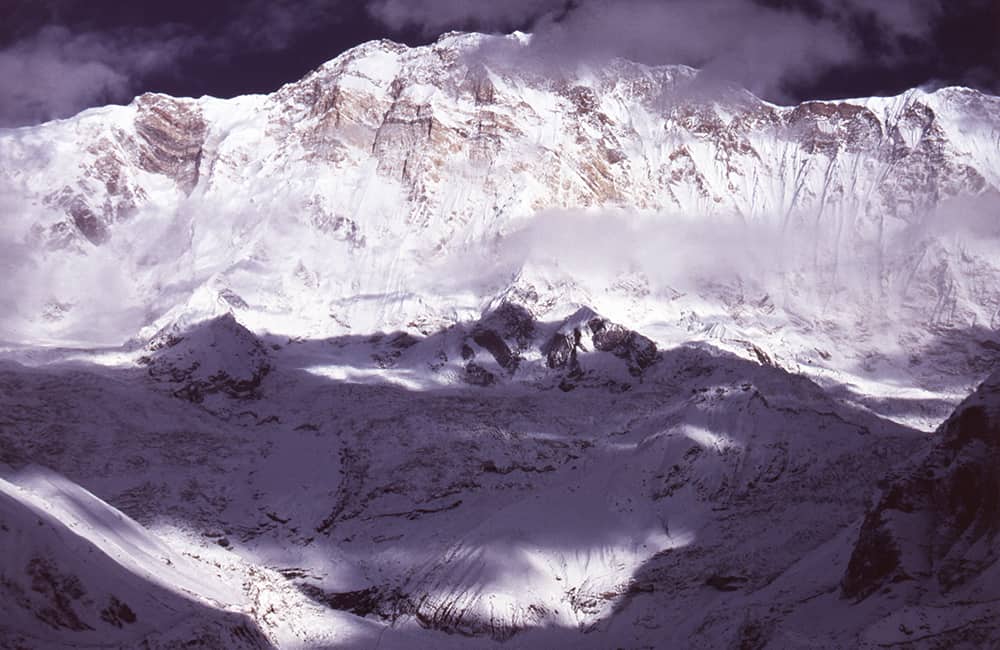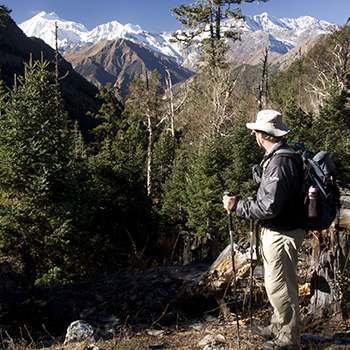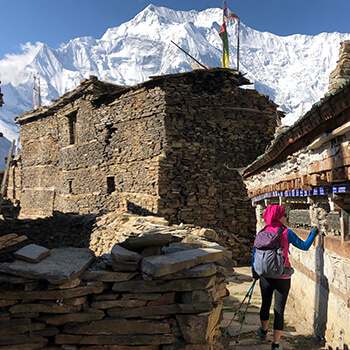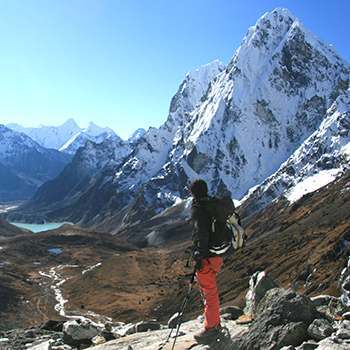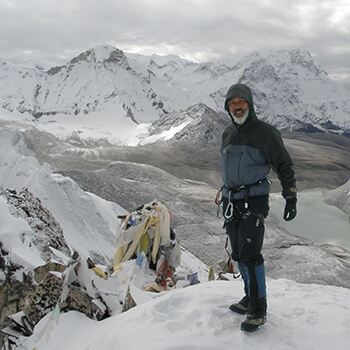Annapurna Sanctuary
Annapurna Sanctuary Trek
The Annapurna Sanctuary is a fabulous mountain amphitheater with magnificent views of the surrounding peaks. En route there are relaxing hot springs, lush forests and fun-loving Gurung communities. Plus there’s many wonderful extension options if you have a little more time.
Key points:
- Trekking Grade: Grade 3 Moderate
- Duration & distance: About 8 days total
- Gradient: Short steep sections
- Quality of path: Formed track, some obstacles
- Quality of markings: Signs at beginning, end and major intersections
- Experience required: Some walking experience required
- Walking times: Less than 5¾ hours a day
- Steps: Steps most days
- Highest point: 4234m
- Best season: March to May and Oct to Jan
- Accommodation: Camping and teahouses
- Recommended map: NP107 GHT Series Annapurna, Naar & Phu, Himalayan Map House, 2017
- Recommended Guide Book: Nepal Trekking and the Great Himalaya Trail, Trailblazer, 2020.

GRADE 3
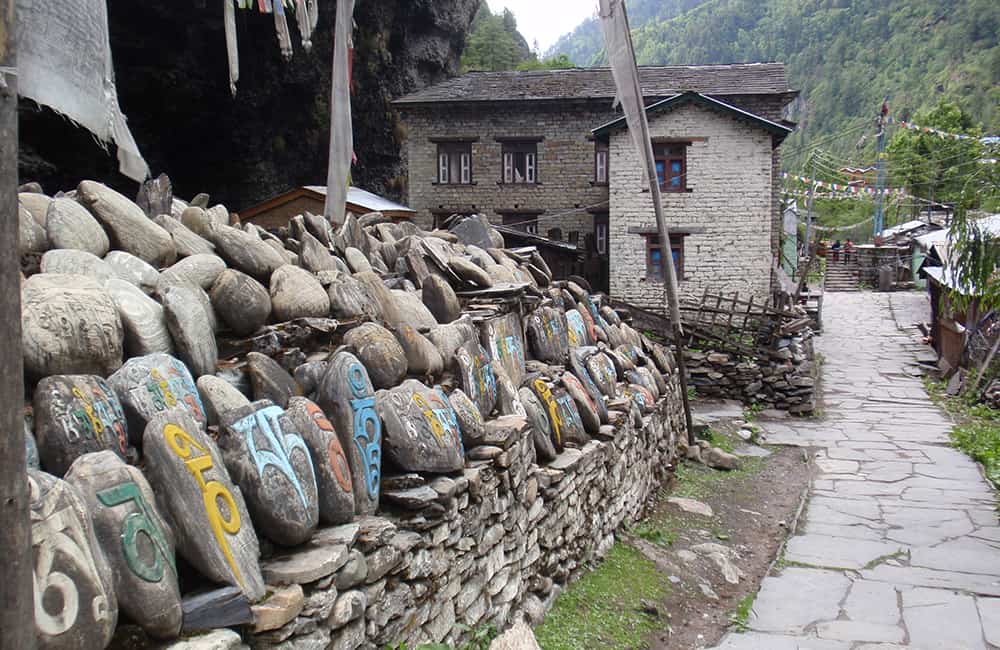
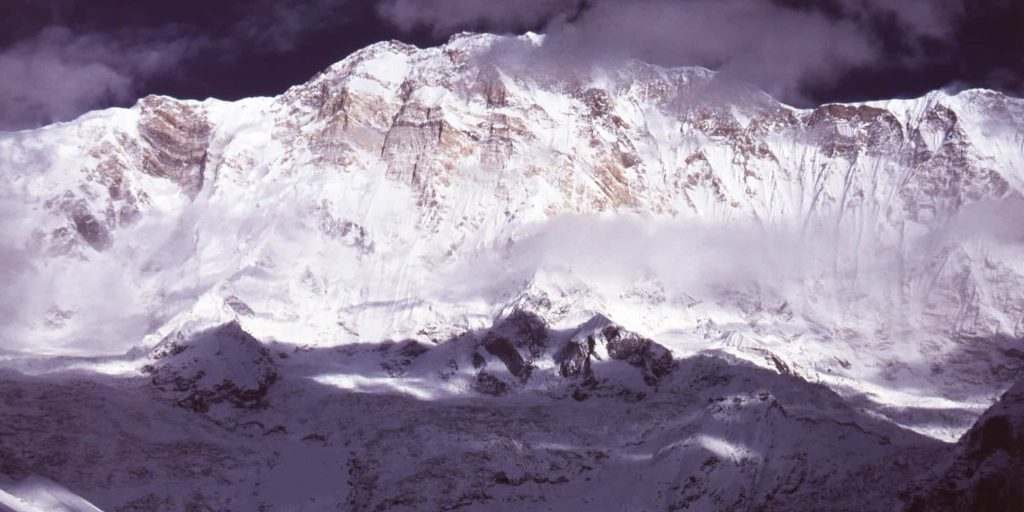
When to Trek to Annapurna Sanctuary?
Lying to the south of the Great Himalaya Range, the Annapurna Sanctuary region has a typical monsoonal climate. A long rainy season from June/July through to the end of September. This is followed by period of stable weather through to mid-January. Later winter storms frequently fill the Sanctuary with large amounts of snow, often burying the teahouses completely. The spring thaw is in March and the trails soon re-open through monsoon.
The teahouses along the Annapurna Sanctuary trail remain open for almost the entire year. However in recent years avalanche danger (resulting in deaths in 2020) closed the trail in March. If you want to trek then please be sure to check weather forecasts and local information every day!
Annapurna Sanctuary Accommodation and Permits
All of the southern ridges and valleys of the Annapurna ranges are well serviced by teahouses and local lodges. So, along the Annapurna Sanctuary trails there are excellent teahouses. There are some remote and spectacular day and side trips that require camping equipment if you want to explore.
The Annapurna Conservation Area Project (ACAP) is the largest protected biodiversity area in Nepal. Local community groups are pushing hard for improved services and support from Kathmandu, and have invested heavily in tourism facilities. The more tourists are attracted to the area, the more value local communities will feel their natural environment has to offer. This has created a positive impact and so long as trekkers visit, the more likely they will help to preserve their region.
Please use local facilities and services where you can and try to encourage sustainable practices at all times.
As of August 2019, you will require the ACAP entry fee of NRs 3000 per person (foreigners), NRs 1000 (SAARC nationals) and NRs 100 (Nepali nationals).
Annapurna Sanctuary Route Options
The Annapurna Sanctuary has remained relatively unchanged since the first trekking boom in the mid-1990s. This is probably because local investment concentrated on the Circuit route and there are limited high trail combination options. It’s easy to link this trek with Poon Hill and/or Khopra Ridge (Khopra Danda) via Tadapani.To the east of Landruk you could connect to the Mardi Himal trails and even go cross country as far as Siklis and the old (and high) monsoon route over the Namun Bhanjyang to Timang.

How Much does the Annapurna Sanctuary Trek Cost?
To help you budget and plan, we’ve made a comprehensive costing explanation on How Much Does the GHT Cost? But here’s a simplified breakdown.
GHT Annapurna Sanctuary Trek for 9-days estimated costs:
- Solo as much as possible US$885.
- Twin-share with minimum guiding US$885 per person.
- Twin-share fully supported US$2,095 per person.
Do you have any questions about costs? Please Get in Touch for more details.
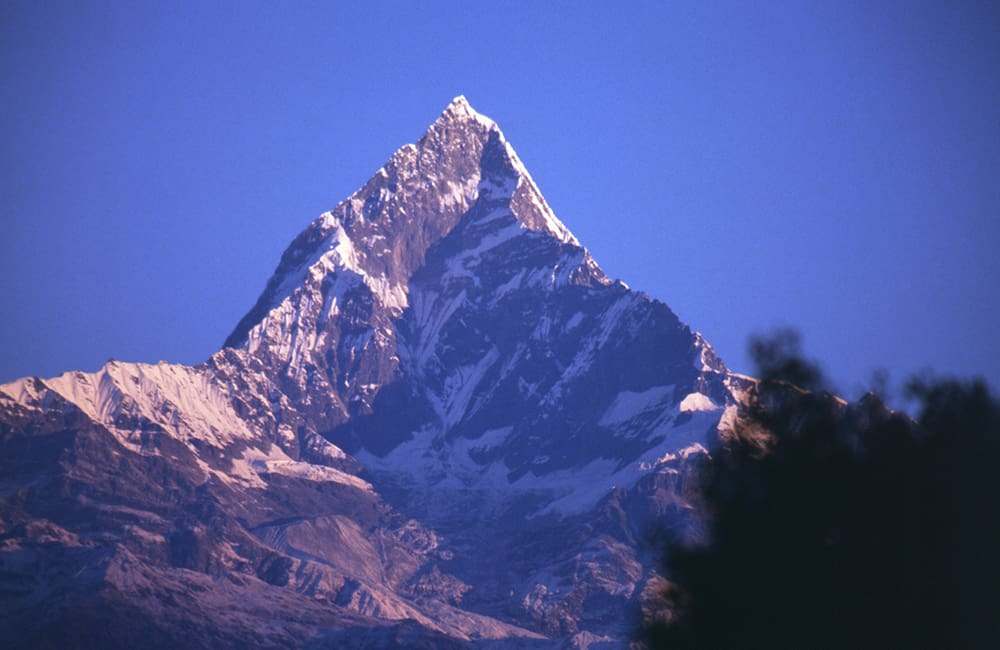
Customisation is Normal
Want to do things a little differently? Maybe take some extra time, or go a bit faster? Or avoid technical sections or combine with other trails? Every GHT trek is different and that changes the price, but please feel free to Get in Touch to ask questions and how to customise your own trek.
Bookings
Please note that www.greathimalayatrail.com does not handle bookings for treks. We are here to inform you about the trails and logistics, but you will need to book through a registered trekking operator in Nepal. If you would like an operator recommendation or feedback on a company you are already talking to, then please Get in Touch.
Your Impacts on the Annapurna Sanctuary Trek

Solo (Independent)
You can improve your social impact by staying an extra day or two to enjoy the views and great hospitality.
Your low GHG and waste impacts are due to eating local. If you eat imported foods likes pasta, this will soon increase your footprint.


Twin Share (Independent)
Social impacts can be improved by staying a day or two longer. Plus use community owned rather than private teahouses and lodges.
Your light GHG and waste footprint is based on eating local food and not imported products like pasta.


Camping (supported)
For a 9 day trek, these impacts are high and hard to justify.
Considering the low impact of solo or small group treks on this route, it makes no sense at all to go with a camping crew.

For more information about social, Green House Gas and waste impacts of treks, see The Impact of your Trek.
-
Destination
-
DepartureKathmandu
-
Dress CodeMid-altitude alpine clothing and camping equipment required
-
IncludedAnnapurna Sanctuary
-
GradeGrade 3
-
Idea Date Range15/10/2021
-
Style of TrekTeahouse







